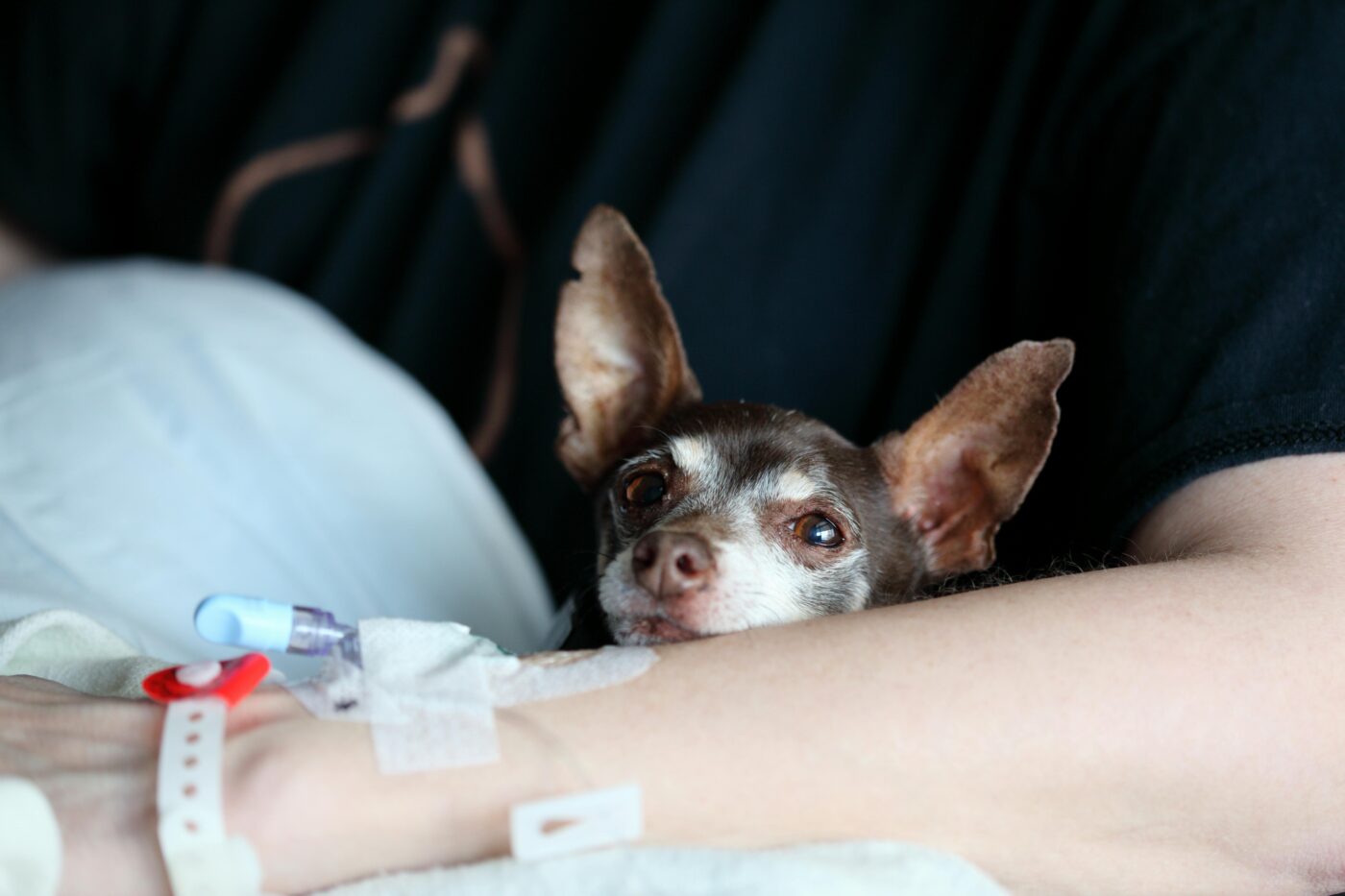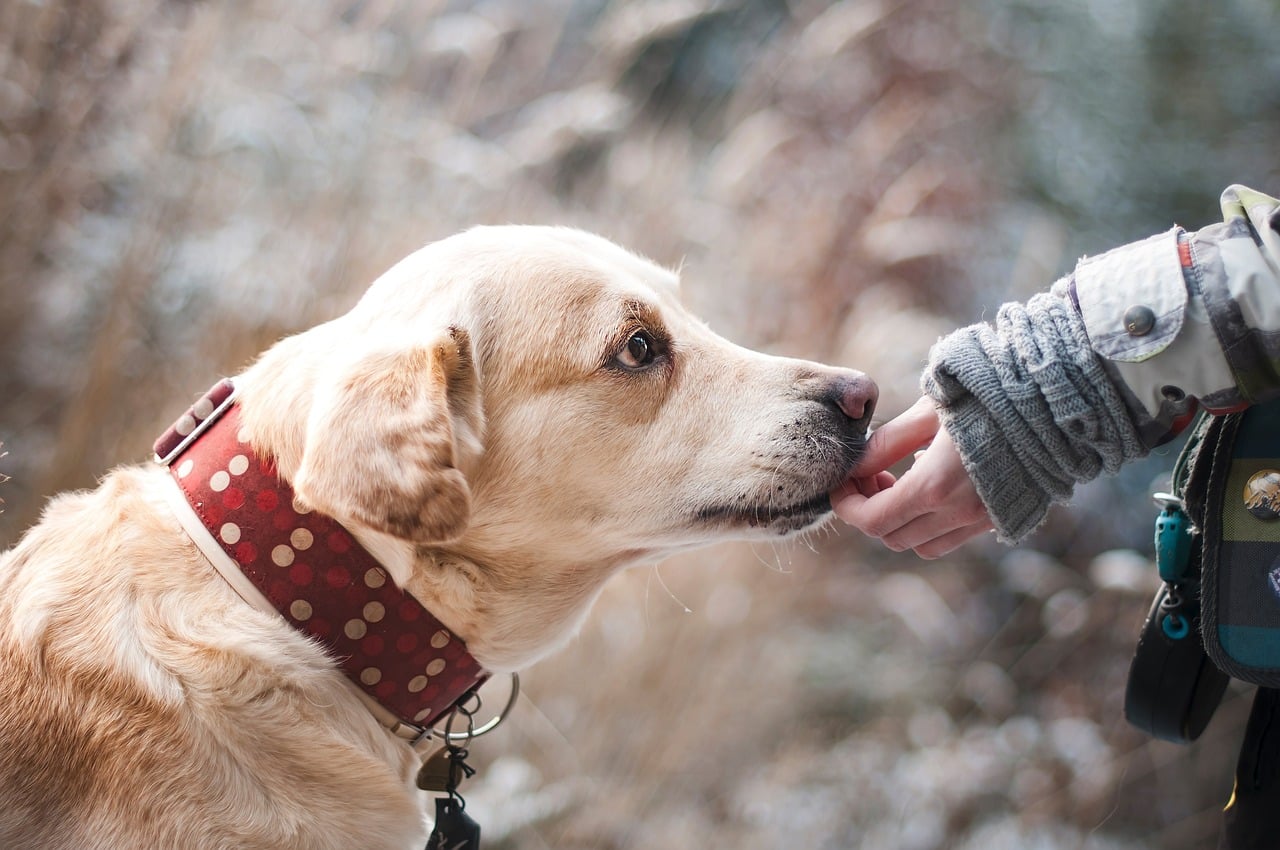

Dogs have long been recognized for their incredible sense of smell. With up to 300 million scent receptors (compared to the mere 5 million humans have), dogs have an unparalleled ability to detect scents that are completely undetectable to us. This extraordinary sense of smell has led to fascinating discoveries about how dogs can detect various human diseases simply by sniffing. Canine companions are proving to be more than just loyal pets—they’re also lifesavers. Their olfactory skills can potentially revolutionize how we diagnose and manage some of the most serious health conditions.
Cancer

One of the most impressive feats dogs can achieve with their noses is detecting cancer. Studies have shown that dogs can detect various types of cancer, including lung, breast, bladder, and skin cancer, with remarkable accuracy. Their keen sense of smell lets them detect volatile organic compounds (VOCs) released by cancer cells. Dogs trained to detect cancer can often do so earlier than conventional diagnostic methods, making them valuable allies in early detection and potentially life-saving diagnoses. The ability of dogs to “sniff out” cancer from breath, urine, or even skin samples is a game-changer in the medical field.
Diabetes

Diabetes is another disease that dogs can detect with their incredible sense of smell. Diabetic alert dogs are trained to recognize changes in a person’s scent when their blood sugar levels become too high or too low. This scent change, caused by the chemical composition of a diabetic person’s breath or sweat, alerts the dog to a potential issue. Many people with diabetes rely on these alert dogs to warn them before their blood sugar levels reach dangerous levels, providing an added layer of security. These dogs can alert their owners by pawing, nudging, or even fetching medical supplies, offering life-saving assistance in real time.
Epilepsy

Dogs have an incredible ability to detect oncoming seizures in people with epilepsy, often before the person themselves is aware of the impending event. Seizure alert dogs are trained to recognize subtle changes in their owner’s scent, behavior, or body chemistry that indicate an oncoming seizure. While the exact mechanism behind this ability is still being studied, it’s clear that dogs can provide critical early warning, giving the person time to move to a safe location or take necessary precautions. These dogs offer emotional support and a crucial physical safeguard against injury during a seizure.
Parkinson’s Disease

Recent studies have suggested that dogs can detect Parkinson’s disease through their sense of smell. Parkinson’s causes the body to release certain compounds that may have a distinct odor, which dogs can detect even before symptoms are fully developed. Early detection is crucial for managing Parkinson’s, and while there is no cure, early treatment can help slow the progression of the disease. The potential for dogs to detect Parkinson’s in its early stages could lead to earlier interventions, improving the quality of life for those affected by this neurodegenerative disorder.
Malaria

Dogs are even being trained to detect malaria, a life-threatening disease mosquitoes transmit. Studies have shown that dogs can detect malaria with astonishing accuracy by sniffing worn clothing or socks from infected individuals. Malaria releases specific odors due to the parasites in the blood, which dogs can pick up on. In regions where malaria is prevalent, using dogs to detect the disease could be a valuable tool for early diagnosis, helping to prevent outbreaks and save lives by catching the disease before it spreads.
COVID-19

During the COVID-19 pandemic, research into dogs’ ability to detect the virus took off, and the results have been promising. Dogs can be trained to sniff out COVID-19 infections by detecting the volatile organic compounds produced by the virus in sweat or breath. Studies have shown that dogs can identify COVID-19 cases with a high level of accuracy, even in asymptomatic individuals. With their ability to screen large groups of people quickly, such as at airports or large gatherings, dogs have become a valuable tool in the fight against the pandemic, offering a non-invasive and rapid detection method.
Narcolepsy

Narcolepsy is a neurological disorder characterized by sudden and uncontrollable sleep attacks, which can be dangerous for individuals in certain situations. Remarkably, dogs can detect the onset of a narcoleptic episode by sensing changes in their owner’s body chemistry. Dogs trained for this purpose can warn their owners when a sleep attack is about to occur, giving them time to find a safe place to rest. The companionship and support provided by these dogs greatly improve the lives of those living with narcolepsy, offering an extra layer of safety and independence.
Migraine Headaches

Some people who suffer from frequent migraines have reported that their dogs seem to know when an attack is coming before they even feel the symptoms. Dogs can pick up on subtle changes in their owner’s scent, behavior, or body chemistry that signal the onset of a migraine. While this ability hasn’t been as widely studied as other scent-detection capabilities, many owners of migraine-alert dogs swear by their dogs’ accuracy. These dogs offer comfort and alert their owners to take medication or rest before the migraine becomes debilitating, helping to mitigate the intensity of the attack.
Prostate Cancer

Prostate cancer is another form of cancer that dogs have been trained to detect. Studies have shown that dogs can sniff out the disease by detecting specific volatile compounds present in urine samples from individuals with prostate cancer. The early detection of prostate cancer is crucial for effective treatment, and dogs’ ability to detect the disease early can lead to better outcomes for patients. While this field of study is still evolving, the potential for dogs to assist in cancer diagnosis is incredibly promising and could revolutionize early detection methods for prostate cancer.
Dogs Are Sniffing Their Way To Lifesaving Fame

When it comes to detecting diseases, dogs aren’t just man’s best friend—they’re also medical marvels with extraordinary noses that can save lives. Their ability to sniff out various illnesses, often before traditional medical tests can, makes them invaluable companions in both the home and healthcare settings. These incredible dogs are as vital as any high-tech medical equipment. So, the next time you see your dog sniffing around, remember: they might be picking up on something far more important than just a snack under the couch!
The post 9 Human Diseases Dogs Can Detect By Scent appeared first on iHeartDogs.com.
